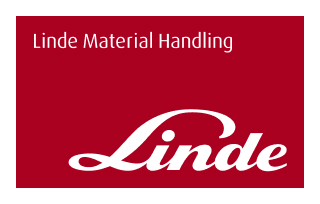- Blog
- General


Forklifts and pedestrians operating in the same space pose significant risks, as highlighted by Australian workplace accident statistics.
Between 2017 and 2022, SafeWork NSW recorded 1,538 forklift-related incidents, with incidents involving pedestrians being the most commonly reported. Similarly, WorkSafe Victoria noted that pedestrians were the largest group seriously injured by forklifts in 2022, making up almost 20% of accident claims.
The good news is that these accidents are preventable.
Authorities emphasise that proper safety measures can make a significant difference, encouraging employers to prioritise safety and ensure their machinery and systems of work are fit for purpose.
According to WorkSafe Executive Director of Health and Safety, Narelle Beer, "Even a slow-moving forklift can injure or kill yet too many employers are still failing to implement traffic management plans that separate forklifts from pedestrians with physical barriers, pedestrian exclusion zones, traffic lights and signage."
Forklifts are large, heavy machines, and when they are operated close to pedestrians, the risk of accidents increases significantly.
Collisions often occur due to factors such as poor visibility, insufficient training, or failing to adhere to safety protocols. Many incidents involve pedestrians entering areas where forklifts operate or operators failing to notice pedestrian traffic.
A proven way to prevent pedestrian-related incidents is by keeping ‘man and machine’ separated.
“Pedestrian separation is always the safest solution,” says Allan Spackman, Technical Manager - Warehousing Solutions at Linde Material Handling Australia. His advice is echoed in a recent WorkSafe guidance, which highlights the importance of separating forklifts from pedestrians in the workplace.
The guidance outlines practical ways to reduce risks, including traffic management systems such as physical barriers, exclusion zones, and signage.
Indeed, Australian regulations, like those in most other countries, also emphasise the need for safety measures to protect workers. These include proper training for forklift operators, the implementation of pedestrian pathways, and clear signage to minimise risks.
Separation begins with a well-organised workspace with clear partitions. When pedestrians and forklifts operate in their designated areas, it reduces congestion, minimises delays, and optimises the flow of goods. Besides enhancing safety, this efficient workflow can improve productivity and enable better use of resources.
According to Spackman, Linde partners with many providers to assist with pedestrian separation.
“There are now some very interesting technologies in this space, like a partner that offers a modular pedestrian barrier system that is actually rated and tested to deflect the impact of specific forklifts carrying their full rated loads away from pedestrian walkways,” he explains.
Linde also offers a range of technologies fitted to its forklifts to support pedestrian safety efforts by keeping machines at a safe distance.
“Our machines have many in-house and aftermarket assistance systems available, from motion detection, reverse sensors, AI-based human recognition, 360-degree camera systems, and Linde Safety Guard, a modular pedestrian warning system that doesn’t require line-of-sight to the pedestrian (unlike camera-based systems),” he adds.
Spackman advocates a double-headed approach – alerting forklift operators to the presence of pedestrians while simultaneously warning pedestrians when forklifts are approaching.
According to experts, establishing clear guidelines for pedestrian and forklift interactions fosters a culture of safety.
However, these guidelines should be actively reinforced and embedded into the company culture. This requires ongoing training, monitoring and encouragement to ensure staff consistently follow best practices and avoid unsafe habits.
Safety advisors stress the need for a proactive approach to prevent complacency, often a key factor in workplace accidents.
The separation of forklifts and pedestrians is not just a safety measure; it is a critical component of effective workplace management – and a duty of care obligation for employers.
By prioritising this separation, companies can safeguard their employees, improve operational efficiency, and reduce workplace risks.
Keep up to date with the latest in material handling safety and innovation by visiting our Content Hub and subscribing to our quarterly newsletter. And for the latest news and updates on all things Linde, follow us on LinkedIn.
VISIT CONTENT HUB